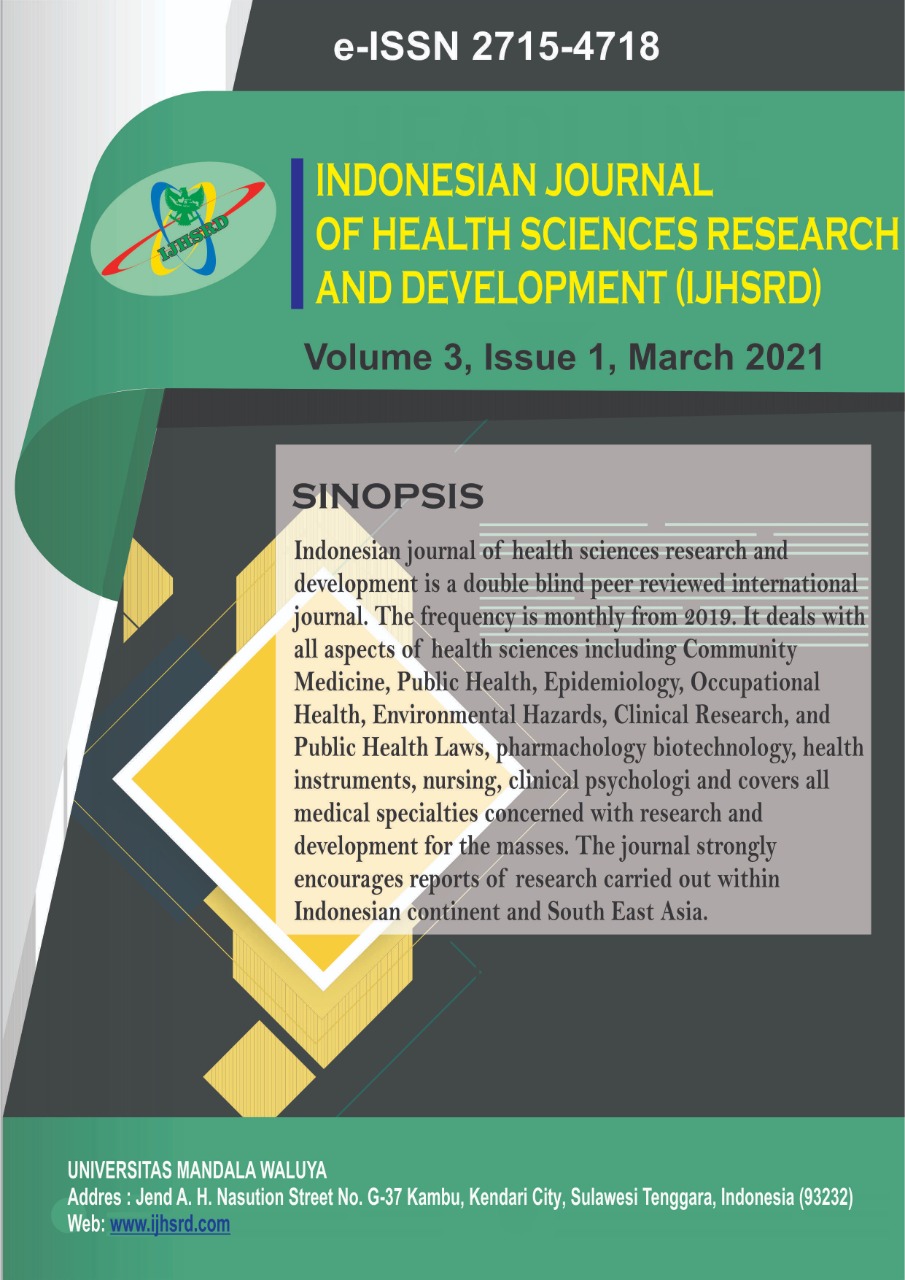Main Article Content
Abstract
Background: The amount of waste that is not processed and classified as non-biodegradable waste such as Styrofoam, well managed household waste is 36.8%. The amount of waste that is not properly managed is 63.2% of the total weighted waste of 282,654 tonnes. Lack of training for scavengers and the community has resulted in a large amount of stytrofoam waste not being used.
Methods: The purpose of this study was to assess the effect of training on using Styrofoam waste into bataco. This research is a pre-experimental study with a one group pre testpost test design, conducted a pretest, then given treatment in the form of training and practice recycling styrofoam into concrete blocks. After that, within a period of approximately 1 month after treatment, a posttest is carried out to measure again. The respondents were trash scavengers, amounting to 83 people.
Results: The test results in this study indicate that there is an effect of training on the use of Styrofoam waste into concrete blocks in the garbage scavenger community in Palopo City with a value of p = 0.000.
Conclusion: Styrofoam can be modified to become concrete clocks. This can reduce the garbage waste in the community in Palopo City
Keywords
Article Details

This work is licensed under a Creative Commons Attribution-ShareAlike 4.0 International License.
References
- Abida, H. N. (2017). Model of Environmental Empowerment and Community Economic Empowerment through Recycling of Waste in Sukunan Environmental Tourism Village. Social Studies, 6(6), 654–667.
- Atmaji, L. T. (2017). Management of Waste Empowerment Based Crafts Businesses in Sukunan Hamlet, Banyuraden Village, Sleman Regency. Jurnal Tata Kelola Seni, 2(2), 1–6. https://doi.org/10.24821/jtks.v2i2.1818
- Creswell, J. W. (2016). Research Design, Qualitative, Quantitative, and Mixed Methods Approaches. 368.
- Dewi, P. K. (2017). Empowering Woman through the Plastic Waste Recycling Program at the Kartini Independent Waste Management Group, Radungunting Tamansari Kalasan, Sleman. Universitas Negeri Yogyakarta.
- Environmental Services. (2018). Annual Program Profile. Palopo.
- Faizah. (2008). Community Based Housedhold Waste Management 1–154.
- Ministry of Health of the Republic of Indonesia. (2018). Riskesda. Jakarta.
- Ministry of Environment and Forestry, Republic of Indonesia. (2018). National Waste Management Information System. Retrieved from http://sipsn.menlhk.go.id/?q=3a-data-umum
- Ministry of Health of the Republic of Indonesia(2018). Main Result of Basic Health Research. Ministry of Health of the Republic of Indonesia, 1–100. https://doi.org/1 Desember 2013
- Kurniaty, D. R., & Rizal, M. (2011). Utilization of Waste Management Result as Alternative Construction Building Materials. Jurnal Smartek, 9(1), 47–60.
- Marliani, N. (2015). Utilization of Household Waste (Inorganic Waste) as a Form of Implementation of Enfironmental Education. Formatif: Jurnal Ilmiah Pendidikan MIPA, 4(2), 124–132. https://doi.org/10.30998/formatif.v4i2.146
- Purwaningrum, P. (2016). Effort to Reduce the Generation of Plastic Waste in the Environment. 8(2), 141-147.
- Santoso, A., & Widodo, S. (2011). Utilization of Styrofoam Waste ( Expanded Polysterene ) For Wall Making. VII(1), 1–18. https://doi.org/10.1109/ICCV.2013.269
- Sucipto, C, D. (2012). Waste Processing and Recycling Technology. Yogyakarta: Nuha Medika.
- Sumantri. (2015). Environmental Health. Jakarta: Kencana.
- Wirahadi, M. (2016). Interior Elements Made of Raw Styrofoam Waste and Orange Peel Waste.None, 5(2), 144–153.
